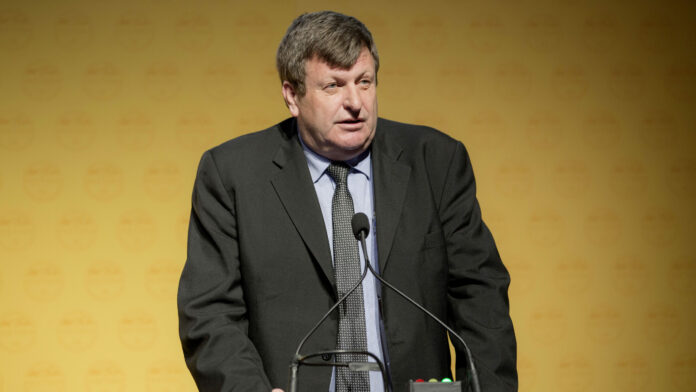
INVESTORS attending the Denver Gold Show this week, one of the headline conferences of the gold industry calendar, may have pause for thought over Harmony Gold, the South African firm that has become synonymous with gold price leverage.
For decades, the company has traded off the marginality of its assets. When the gold price spikes, the firm’s typically deep underground shafts become highly profitable.
What’s interesting about the company now, however, is that it’s becoming increasingly expensive to offer this leverage as economically available gold resources in South Africa – where gold has been mined for over a century – diminish.
Shares in the company fell to their lowest level in a year – a 19% decline – just after CEO Peter Steenkamp said it would spend R8.5bn in capital expenditure in the current (2023) financial year – some R1.6bn more than previously guided. Capital spend for 2024 will be an equally onerous R8.2bn.
According to RMB Morgan Stanley the bump in 2023 capex would result in a 518 basis point reduction in free cash flow in 2023 which might imperil the dividend. Asked about this, Steenkamp told the Financial Mail there were no plans to to cut the payout. Harmony “wants to remain a dividend payer” despite the “significant spend on organic growth,” he said.
In the last five years Harmony has twice bought assets from AngloGold Ashanti for a total cost of $600m. One of them – Moab Khotsong – contains an extension project called Zaaiplaats that Harmony needs to help replace depleting production elsewhere.
But at what cost? Firstly, R680m of the capital required for Zaaiplaats has been redirected from Tshepong, one of Harmony’s mines in the Free State the company was planning to extend for another 19 years. Tshepong mine will now be ‘harvested’, a process called ‘high-grading’, which will reduce its life to seven years.
Adrian Hammond, an analyst for Standard Bank questions the re-allocation. “Redirecting capex to brownfields expansion Project Zaaiplaats seems imprudent in our view,” he says. “Notwithstanding few options exist, Zaaiplaats is deep and high capex and brings elevated technical risk to the company.”
But Steenkamp has little choice as Moab Khotsong was bought with Zaaiplaats specifically in mind. Similarly, Harmony is committed to expanding Mponeng, the other mine from Anglo, in a project called ‘Mponeng Deeps’ – a potentially massive project costing billions of rand.
It’s likely to proceed: “This year we will spend time on the feasbility study,” says Steenkamp. “With the grades available at Mponeng we will most likely give it a go. It’s a fantastic orebody and adds 30 years of life so can be quite substantial.”
But even with Zaaiplaats and Mponeng expansions, Harmony is still running hard to stand still.
According to its its annual results presentation gold production is expected to rise slightly from about 1.49 million oz in its 2022 financial year and rise again marginally to 1.5 million oz the year after before falling off. By 2028, Harmony will have lost a third of current output, even with the current reinvestment.











